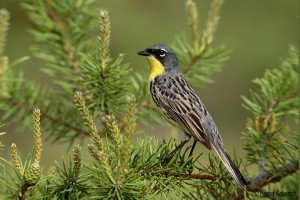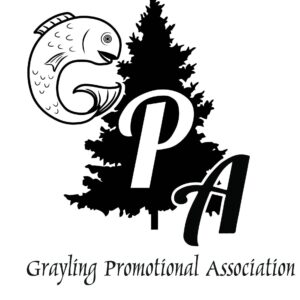Kirtland’s Warbler Tours
Michigan Audubon, in collaboration with Hartwick Pines State Park, offers Kirtland’s Warbler Tours from May 24 through June 30, 2025.
Please note that tours scheduled from Monday, June 23, through Monday, June 30 will meet at the Hartwick Pines Day Use Area.
About the Kirtland’s Warbler
Once living on the brink of extinction, the Kirtland’s Warbler has made significant steps toward recovery, due to careful habitat management practices and creating public awareness. However, it is on the State Threatened Species list.
The Kirtland’s Warbler is one of the rarest songbirds in North America. A true habitat specialist, it breeds primarily in young jack pine forests in a few Michigan counties and in recent years nesting pairs have been recorded in Michigan’s Upper Peninsula, Wisconsin, and Ontario.
2025 Tour Dates
Saturday, May 24 – Thursday, June 30, 2025, at 7 a.m.
Saturdays and Sundays, additional tours at 11 a.m.
Tour Duration
2.5 to 3 hours
Cost
$20 per person
Pre-Registration and Recreation Passport Required:
- Registration will open February 14, 2025, at 9 a.m. Register here.
- A Recreation Passport is required for entry to the park and can be purchased upon arrival (at the entry gate or through the Kirtland’s Warbler tour guide). Non-Michigan residents can purchase a passport beforehand through the State of Michigan here.
Where: Hartwick Pines State Park, Grayling, MI
- Tours meet at the Hartwick Pines Visitor Center (2833 Monarch Dr., Grayling, MI 49738) within Hartwick Pines State Park
- Beginning Monday, June 23, through Monday, June 30, tours will meet at the Hartwick Pines day use area due to construction at the Visistor Center. To get to the day use area, follow the signs past the Visitor Center.
- Participants are given a brief orientation to the Kirtland’s Warbler and the jack pine forest habitat
- Afterward, participants caravan to protected pine barrens for the chance to view the warbler
- Looking for accommodations in Grayling? Check out Grayling Visitors Bureau.
What you can expect:
- Tour Size: Each tour is limited to 25 participants. Groups of 10 or more should contact Michigan Audubon at [email protected] to arrange a private 11 a.m. weekday tour.
- Kirtland’s Warbler Sightings: We have a high success rate of spotting the Kirtland’s Warbler! However, weather conditions can affect their visibility. During rainy or extremely hot weather, the warblers may stay hidden in the pine branches. But don’t worry, our experienced guides have a knack for finding them even in unfavorable conditions, and short of severe weather our tours take place rain or shine.
- Trail and Terrain: You’ll park along the road and walk on sandy two-tracks through the jack pine habitat. Participants must remain on trail and cannot venture into the jack pine stands. Typically, the walking distance is less than a mile, but it depends on where the birds have established their nesting territories for the season.
- Dress Appropriately: Be prepared for the weather and terrain! Wear comfortable walking or hiking shoes suitable for outdoor trails.
- Duration of the Experience: Plan to spend about two hours outdoors on the trails, exposed to the elements. We recommend wearing sunscreen, insect repellent, and a hat for added protection.
- Cancellation: Please be advised that we may cancel any tour due to unforeseen circumstances, such as adverse weather conditions.
Looking for More Tours?
U.S. Forest Service also offers Kirtland’s Warbler and Jack Pine Wildlife Tours. Visit their website for more information.
Questions? Contact us at [email protected]
Friends of the Kirtland’s Warbler Tours
Grayling Visitors Bureau
Grayling Promotional Association
Michigan Audubon appreciates the support of the Grayling Visitors Bureau and the
Grayling Promotional Association
as we celebrate and protect this rare and iconic songbird.



